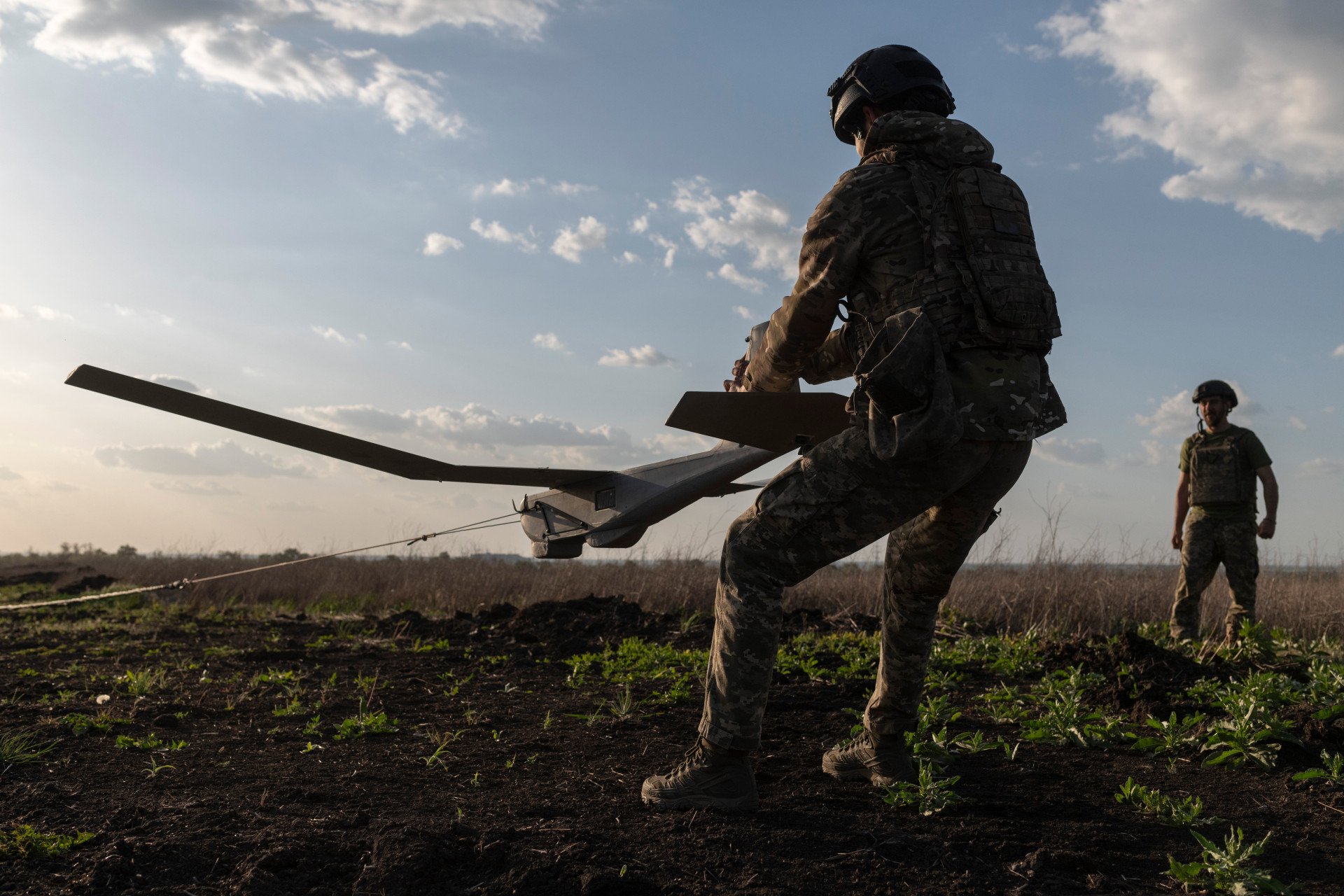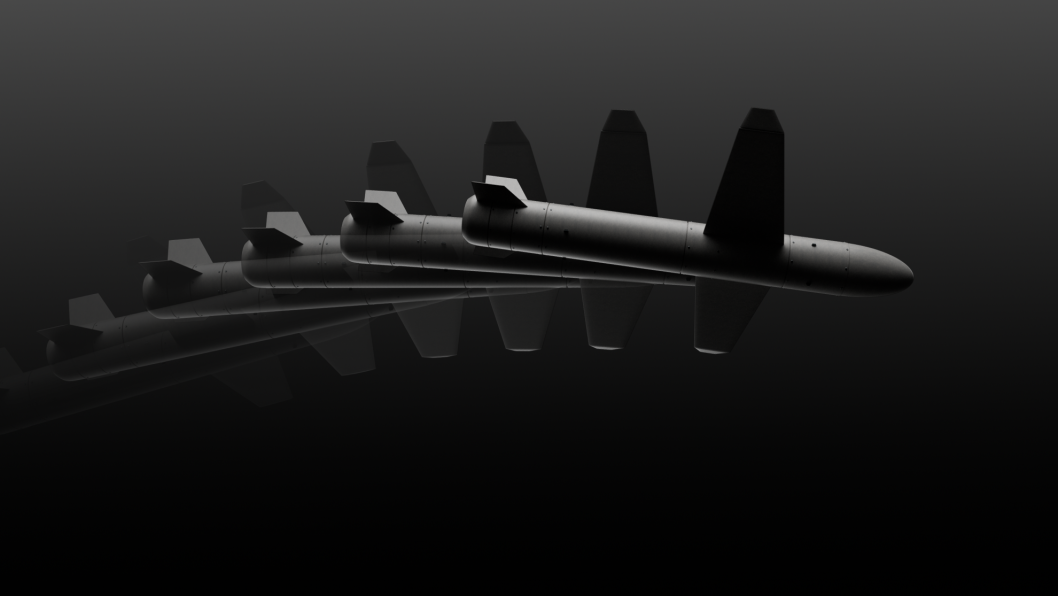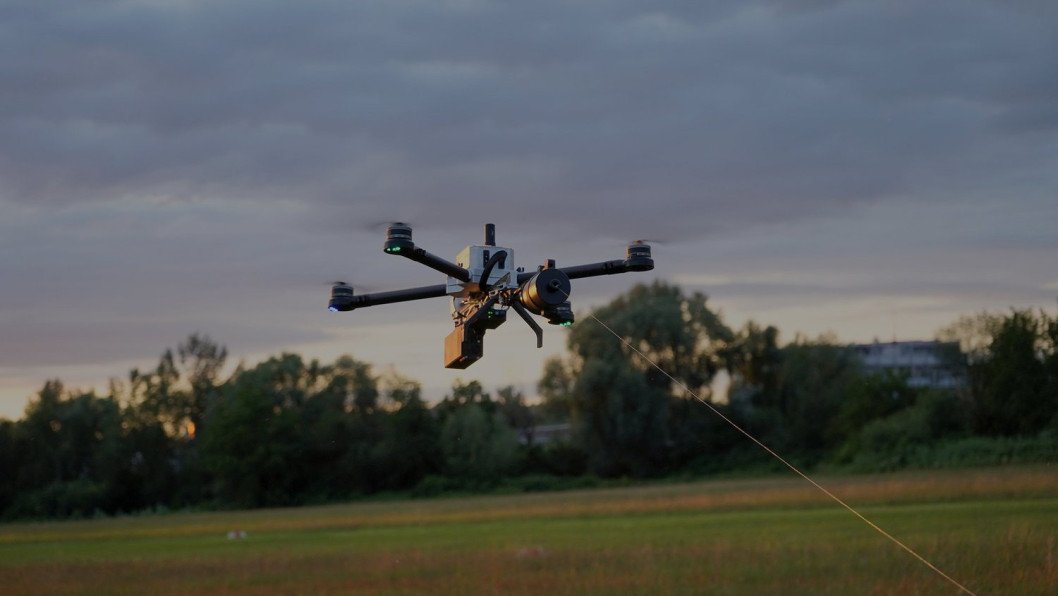- Category
- War in Ukraine
What Are the Latest Drones Ukraine and Russia Deploy?

Drone technology has shaped 21st-century warfare, but Russia’s war on Ukraine has completely transformed how future wars and conflicts are waged. What are the latest drones used on the frontlines and how is this tech evolving?
Russia attacked Ukraine with 145 Shahed drones in the early hours of November 10th, 2024—the highest recorded since the full-scale invasion began. Meanwhile, the Russian media claimed that Ukraine launched its biggest drone attack against Moscow on the same night. Ukrainian drones targeted an ammunition depot in Russia’s Bryansk region on that day, reported the General Staff of the Ukrainian Armed Forces.
Throughout the full-scale invasion, Ukraine, Russia, and their allies have heavily invested in and revolutionized drone technology providing fighting capabilities previously not seen in modern combat.
Ukraine has been rapidly increasing successful long-range drone attacks against Russia, striking dozens of key military targets such as air bases, armament production facilities, and military sites.
Since the onset of Russia's full-scale invasion, Skydio drones have been instrumental in gathering evidence from over 80 shelling sites and more than 100 damaged civilian structures across Ukraine.
— Andriy Kostin (@AndriyKostinUa) July 25, 2024
At our meeting with the @SkydioHQ team, led by CEO Adam Bry (@adampbry), CRO… pic.twitter.com/lpIRlJe2Og
Drones are used for attack and reconnaissance missions but are also used to aid future prosecution cases, gathering evidence from hard-to-reach places.
Ukraine has emerged as a global leader in drone innovation, becoming the first country to establish a dedicated “Unmanned Systems Forces” drone branch within its Armed Forces.
Ukraine’s Defense Ministry confirmed in October 2024 that they have invested in 1.8 million drones for 2024 and 2025.
Ukraine is preparing to create a new branch of the military: The Drone Forces. One of the prototypes is the 411 HAWKS. Today, they are taking us on two of their missions in one of the most difficult directions of the frontline: Robotyne.
— UNITED24 Media (@United24media) March 15, 2024
📹: https://t.co/FCgcV0QoBc pic.twitter.com/YawXzO0Laf
What are the latest drones being used by Ukraine?
The Sting
The Sting, a new first-person view (FPV) drone, is designed to intercept Russia’s Iranian-made Shahed-136 attack drones. The Sting can reach speeds of over 160 km/h (100 mph) and operate at altitudes up to 3,000 meters (10,000 feet), making it well-suited for tracking and intercepting Shahed-136 drones, which have been deployed in large numbers against Ukrainian cities.
Wild Hornets, the Strings producer, says that the average cost of a Sting drone is ten times lower than that of a Shahed drone. Russia’s drastic increase of Shahed use is draining Ukraine of their air defense ammunition, the Sting would be a huge support in countering the wave of attacks.
Ukraine has begun deploying unique Sting drones, capable of intercepting Russian attack drones.
— UNITED24 Media (@United24media) October 24, 2024
READ: https://t.co/0nOE4G7xA9 pic.twitter.com/fnPZkTfiE9
Dragon drone
In September 2024, Ukrainian forces showcased its latest “Dragon” drone which can drop thermite onto Russian positions, like a dragon spitting fire. Thermite is not explosive but generates heat at more than 2,200 degrees Celsius (4,000 degrees Fahrenheit). It burns and damages nearly any material—clothing, foliage, and military-grade vehicles.
The Dragon drone is self-sustaining and nearly impossible to distinguish. The flames burn through the vegetation providing cover for Russian forces exposing Russian troops and their equipment, and enhancing Ukraine's capabilities for further attacks.
It is not illegal to use thermite on military targets. Ukraine has only used them on military targets, said Action on Armed Violence (AOAV) the United Kingdom-based anti-war advocacy organization. Russia however, has used thermite on civilian targets in March 2023 during the battle of Vuhledar, said the AOAV.
Russian attempt to shoot down a Ukrainian Dragon drone spraying thermite on positions in a tree line. pic.twitter.com/5gxWrVFsYC
— WarTranslated (Dmitri) (@wartranslated) September 14, 2024
Palianytsia
Palianytsia rocket drone, named after a type of traditional Ukrainian bread, combines features of both a missile and a drone. Zelenskyy described the Palianytsia as “a new class” of weapons.
The Palianytsia has a range of up to 700km similar to the US-supplied ATACMS. This weapon is in range of various airfields, including Russia’s Savasleyka air base, and could potentially target at least 20 Russian airfields.

Chaklun drone (Wizard drone)
Ukraine’s Ministry of Defense (MOD) has approved the delivery of a domestically produced Chaklun drone. Though very little information has been published about it yet, the MOD confirmed that it can operate in bad weather conditions, adjust artillery fire, and is resistant to Russia’s means of radio-electronic warfare.
The Ministry of Defense of Ukraine has approved the "Chaklun" drone for use.
— WarTranslated (Dmitri) (@wartranslated) October 16, 2024
This compact yet multifunctional unmanned aerial vehicle can adjust artillery fire and demonstrates high resistance to enemy electronic warfare systems due to the use of advanced materials.
The drone… pic.twitter.com/yxDMTbqVko
Stalker 5.0
This drone is slightly different from the traditional aerial variant—this drone is for the water. Ukrainian Stalker 5.0 multifunctional naval surface drone was showcased at the Black Sea Security Forum 2024 in Odesa.
The Stalker has a 600km range, can be configured for one-way strike missions, and can carry a 150kg payload. It can accelerate to speeds of more than 40 knots, about 75 km per hour.
The Stalker can conduct reconnaissance missions in the sea and rivers and can transport weapons, military equipment, and provisions. Though yet to be seen scouting and targeting Russia’s naval fleet, it’s likely this will be gliding through Ukrainian waters soon.
Interceptor drones
Ptashka Drones, a Ukrainian manufacturing company, published a video on October 21, 2024, of Ukrainian forces using net-throwing interceptor drones.
This is another example of simple, yet innovative technology being used on the battlefield. Nets can be attached to drones to neutralize quadcopters, often working in reconnaissance or hovering over military forces and dropping weaponry, such as grenades, from above. These nets, called “netcomets” can effectively capture drones mid-air disabling drones mid-air by tangling their propellers, preventing it from flying.
The nets can be fitted to several types of drones including Mavic, Autel, and FPV models, as they are very light in weight. They also disable and provide the possibility of capturing the targeted drone for re-use.
⚡️🇺🇦Ukrainian FPV with installed net launcher intercepts 🇷🇺Russian drones pic.twitter.com/koNF0Grnsp
— 🪖MilitaryNewsUA🇺🇦 (@front_ukrainian) November 4, 2024
Drone swarm technology
BRAVE1 Defense technology program together with seven teams of manufacturers recently developed and presented “drone swarm” technology. Thanks to AI-based technology, several drones can be connected to a single network, working in unison and controlled by one operator.
Each drone will have its own tasks, and be able to predict the behavior of other drones within its swarm. This would hugely reduce manpower while increasing efficiency and having a larger striking impact.
This tech was developed by the Ukrainian company, “Swarmer”, which is working on producing artificial intelligence-based technology for unmanned systems.
3 most anticipated technologies for the frontline have been tested at @BRAVE1ua facilities.
— Mykhailo Fedorov (@FedorovMykhailo) October 30, 2024
Swarm drones, guided ammunition, robot dog. pic.twitter.com/Ypuzr23Mul
Khyzak REBOFF
REBOFF is a new Ukrainian FPV strike drone with fiber optic cable for communication instead of radio which makes it immune to signal jamming, a hugely effective protection against small drones.
Signal jamming has become a problem for both Ukraine and Russia, French Army Chief of Staff Gen. Pierre Schill said that over “75% of drones are lost” due to signal jamming. Fibre optics is a very effective way of working around this issue and is also found to be used by Russia for some of their drones.
The REBOFF has completed military testing, is undergoing military certification, and is preparing for its first batch delivery.

What are the latest drones being used by Russia?
Molnyia-1
Russian forces targeted Kharkiv’s Saltivskyi district using a new type of drone called the “Molniya-1,” according to Dmytro Chubenko, spokesperson for the Kharkiv Regional Prosecutor’s Office on November 12.
Molniya is constructed from simple materials such as plywood and plastic, with a range of up to 40 kilometers and carrying a warhead containing 3 to 5 kilograms of explosives.
The Molniya isn’t effective against military targets but can be dangerous against civilian targets. “This type of weapon terrorizes the local population. People are injured while walking on the streets or even in their homes,” Chubenko warned.
⚡️Russians have recently attacked #Kharkiv with a Molniya-1 drone, which is difficult to detect.
— Denys from Kharkiv (@GlushkoDenys) November 13, 2024
This is why the air raid alert may not be activated in the city, but this does not mean that there is no danger in Kharkiv.
Since May 2024, Russian troops have been massively using… pic.twitter.com/IC7w3zjMpr
S-70 Okhotnik
The Okhotnik is a combat drone capable of carrying missiles and bombs within its fuselage, with a total payload capacity of up to 2.8 tons. It’s designed to evade radar detection, earning its classification as a stealth drone.
Okhotnik has a flight range of 3,500 to 6,000km, depending on the source. Very little is known about this drone, as of 2024, only four prototypes are known to exist, despite initial plans for mass production by late 2024 or early 2025.
I can confirm, based on footage from @PEnssle, that Ukrainian forces have already recovered and removed large, relatively intact pieces of the advanced Russian S-70 Okhotnik UCAV that crashed in Donetsk Oblast.
— OSINTtechnical (@Osinttechnical) October 5, 2024
Notably including the wing segment seen in this video. pic.twitter.com/7Z9yDgKfab
Garpiya-A1
An investigation by Reuters found that Russia started producing a new long-range attack drone—the Garpiya-A1—with Chinese engines and parts. European intelligence sources estimated that Russia had built around 2,500 over 2023. These drones closely resemble the Iranian Shahed-136 drone.
Investigations also found a G-3 version will begin full-scale production soon. Experts claim that this model is more effective and lethal than its predecessor, with a 2,000km range and carrying payloads of up to 50kg.
Gerbera
The Gerbera drone is a new Russian multifunctional drone and was found in the Kyiv region, in July 2024. Russian units stated that this UAV could be used for reconnaissance, as a strike drone, or as a decoy to distract Ukraine’s air defense systems, according to sources.
Its exact payload is unknown but it was found in the Kyiv region, suggesting that it can travel at least a few hundred km. Its accuracy is also unknown, sources report that a propaganda video posted online of the Gerbera shows it missing its target.
UNITED24 is raising funds for Ukraine's defense. Donate now to help make Ukraine safe.
-46f6afa2f66d31ff3df8ea1a8f5524ec.jpg)
-c42261175cd1ec4a358bec039722d44f.jpg)
-6359eca46c72bde40a90abaaadd6eaa8.png)
-29a1a43aba23f9bb779a1ac8b98d2121.jpeg)


-206008aed5f329e86c52788e3e423f23.jpg)